
Have you ever wanted to wear a traditional Filipino dress, also known as a Filipiniana dress, but couldn't find one that suited your style or budget? Look no further! In this guide, we will walk you through the steps of making your very own DIY Filipiniana dress. Whether you have sewing experience or are a complete beginner, we have you covered. Get ready to channel your inner Filipina beauty and create a dress that is unique to you. Let's get started!
| Characteristics | Values |
|---|---|
| Fabric | Piña, jusi, organza, or tulle |
| Color | White, cream, or pastel colors |
| Silhouette | A-line, sheath, or ballgown |
| Neckline | Off-shoulder, sweetheart, or round |
| Sleeves | Butterfly, bell, or cap sleeves |
| Embroidery | Intricate floral or barong tagalog |
| Length | Floor-length or tea-length |
| Waistline | Empire, natural, or drop waist |
| Accessories | Baro't saya, tapis, or statement jewelry |
| Traditional touch | Maria Clara sleeves or panuelo |
What You'll Learn
- What materials do I need to make a DIY Filipiniana dress?
- Do you have any step-by-step instructions or tutorials for making a DIY Filipiniana dress?
- How much fabric do I need to make a DIY Filipiniana dress?
- Can you suggest any patterns or templates for a DIY Filipiniana dress?
- Are there any tips or tricks for getting the traditional Filipiniana dress silhouette right?

What materials do I need to make a DIY Filipiniana dress?
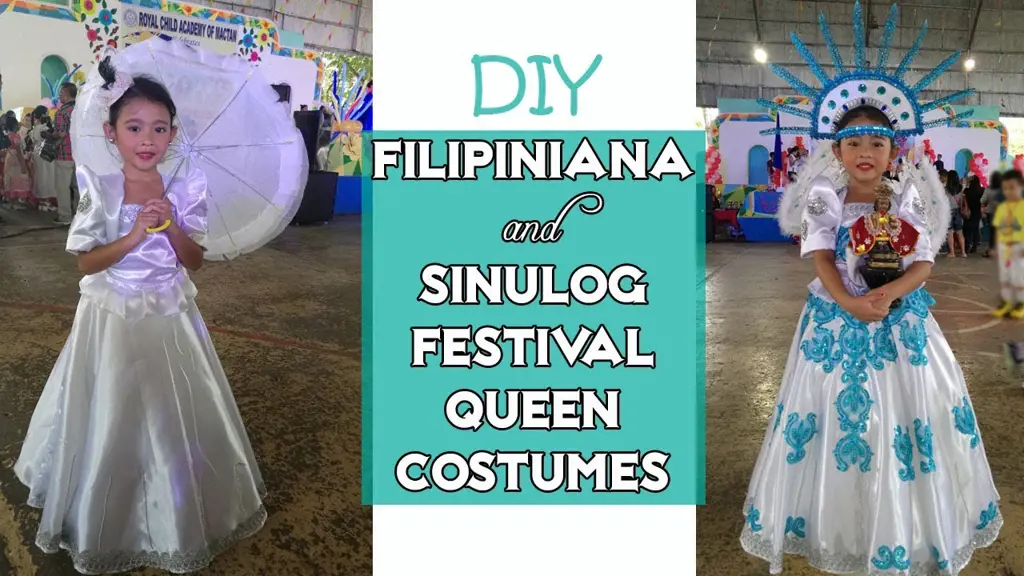
Filipiniana dresses are traditional dresses from the Philippines that are usually worn for special occasions and events. Creating your own DIY Filipiniana dress can be a rewarding and fulfilling project that allows you to showcase your creativity and love for Filipino culture. To get started, there are several materials that you will need. Here is a list of the essential materials for making a DIY Filipiniana dress:
- Fabric: The fabric is perhaps the most important material for making a Filipiniana dress. Choose a fabric that is lightweight and breathable, such as silk or chiffon. Traditionally, Filipiniana dresses are made with piña or jusi, which are locally woven fabrics. However, these fabrics can be quite expensive and harder to find, so silk and chiffon are good alternatives.
- Sewing machine: A sewing machine will make the sewing process much faster and easier. Make sure your sewing machine is in good working condition and you have the necessary sewing skills to operate it.
- Thread: Choose a matching thread color that complements your fabric. Use high-quality thread that is strong and durable to ensure that your dress holds up well.
- Scissors: Invest in a good pair of fabric scissors that are sharp and easy to handle. These will come in handy for cutting the fabric and any other materials you may need.
- Measuring tape: You will need a measuring tape to take accurate measurements of your body for creating the pattern and fitting the dress properly. Make sure to measure your bust, waist, hips, and length of the dress.
- Pins and needles: These are essential tools for holding the fabric in place while sewing. Use fine, sharp pins that won't damage the fabric, and choose needles that are suitable for the type of fabric you are working with.
- Patterns or templates: If you are a beginner, using a pre-made pattern or template can be helpful. These will provide you with the basic structure and shape of the dress, which you can then customize and modify according to your preferences.
- Embellishments: Filipiniana dresses are often adorned with intricate embroidery, lace, beads, or sequins. Decide on the type of embellishments you want to add to your dress and gather the necessary materials. It is best to choose embellishments that complement the fabric and the overall design of the dress.
- Closure options: Depending on the style of Filipiniana dress you are making, you will need closures such as buttons, zippers, hooks, or snaps. Choose the type of closure that works best for your dress design and sewing skills.
- Lining (optional): If you want your dress to have a smooth finish or added support, you may choose to add lining. Lining fabric is typically lightweight and comfortable against the skin.
Once you have gathered all the necessary materials, you can begin the process of creating your DIY Filipiniana dress. Follow a pattern or template, or create your own design. Take your time, pay attention to details, and enjoy the process of bringing your vision to life. With the right materials and a little creativity, you can create a beautiful Filipiniana dress that reflects your personal style and love for Filipino culture.
The Ultimate Guide to Using the Oldham when Re-hemming a Dress
You may want to see also

Do you have any step-by-step instructions or tutorials for making a DIY Filipiniana dress?
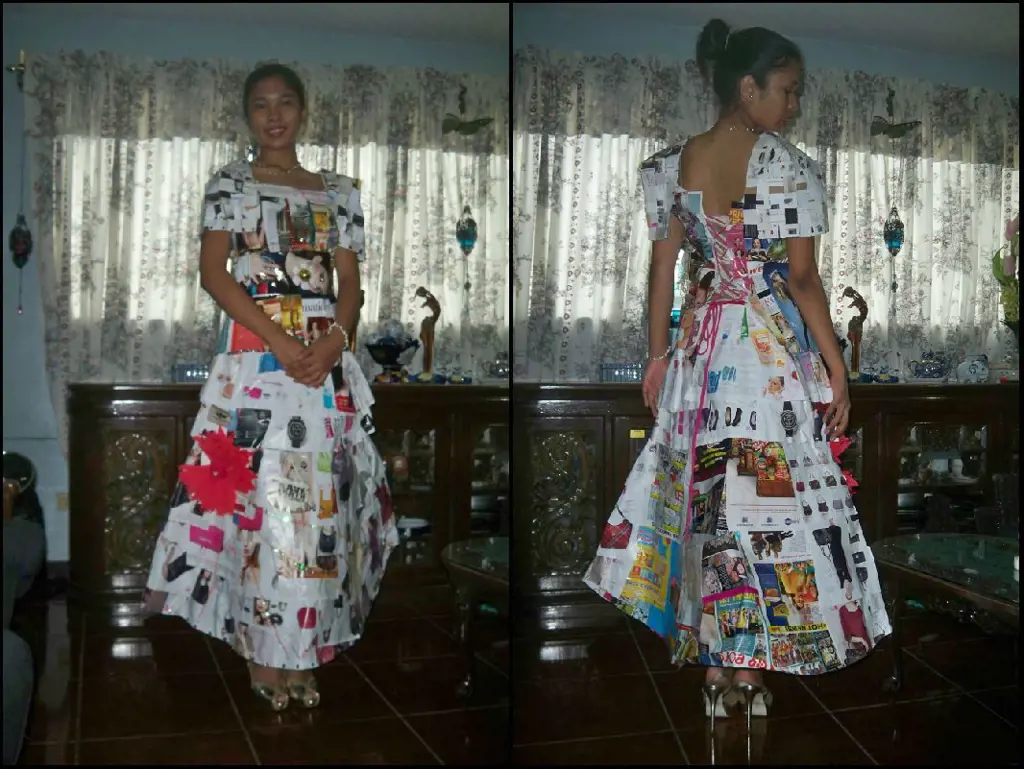
Filipiniana dresses are traditional Filipino outfits typically worn for formal events such as weddings, debuts, and other special occasions. They are often characterized by their intricate embroidery, elegant sleeves, and flowing skirts. Creating your own Filipiniana dress allows you to showcase your creativity and personal style while paying homage to the rich cultural heritage of the Philippines.
Here is a step-by-step guide to help you create your own DIY Filipiniana dress:
- Gather Materials: To make a Filipiniana dress, you will need the following materials: fabric (satin, silk, or chiffon are commonly used), embroidery thread, lace trim, sewing machine or needle and thread, scissors, measuring tape, and pins.
- Take Measurements: Start by taking your measurements to ensure the dress fits you perfectly. Measure your bust, waist, hips, and the length you desire for the dress.
- Create a Pattern: Once you have your measurements, create a pattern for the dress. You can either draft your own pattern on paper or use an existing dress pattern as a reference. Make sure to include darts for a fitted bodice and a flared skirt for a traditional Filipiniana look.
- Cut the Fabric: Lay your fabric on a flat surface and use the pattern to cut out the necessary pieces. Cut the front and back bodice pieces, as well as the skirt pieces. Cut any additional sleeves or collar pieces if desired.
- Sew the Bodice: Take the front and back bodice pieces and pin them together, right sides facing. Sew along the sides and shoulder seams using a sewing machine or a needle and thread. Make sure to leave an opening on one of the side seams for the zipper or buttons.
- Add Embroidery: If you want to incorporate traditional Filipino embroidery into your dress, now is the time to add it. Use embroidery thread and needle to create intricate designs on the bodice or sleeves. You can find inspiration from traditional Filipino motifs or create your own unique designs.
- Attach the Sleeves: If you want to add sleeves to your dress, now is the time to attach them. Pin the sleeves to the bodice, aligning the seams, and sew them in place.
- Sew the Skirt: Take the skirt pieces and sew them together, creating a seam at the back. You can gather the skirt for a fuller look or leave it flat for a more streamlined silhouette.
- Attach the Skirt to the Bodice: Place the bodice and the skirt right sides together and pin them along the waistline. Sew them together, making sure to distribute the gathers evenly.
- Finishing Touches: Hem the bottom of the skirt to your desired length. You can add lace trim to the hemline or neckline for an extra touch of elegance. Finally, add a zipper or buttons to the opening of the dress.
Once you have completed these steps, your DIY Filipiniana dress is ready to wear. Feel free to accessorize with traditional Filipino jewelry, such as a gold necklace or a mother-of-pearl hairpin, to complete the look.
Remember, creating your own DIY Filipiniana dress is a labor of love that requires time and patience. Take your time, enjoy the process, and have fun expressing your creativity. Whether you're attending a special event or simply want to celebrate your Filipino heritage, your handmade Filipiniana dress is sure to be a showstopper.
The Best Techniques for Folding an A-Line Dress
You may want to see also

How much fabric do I need to make a DIY Filipiniana dress?
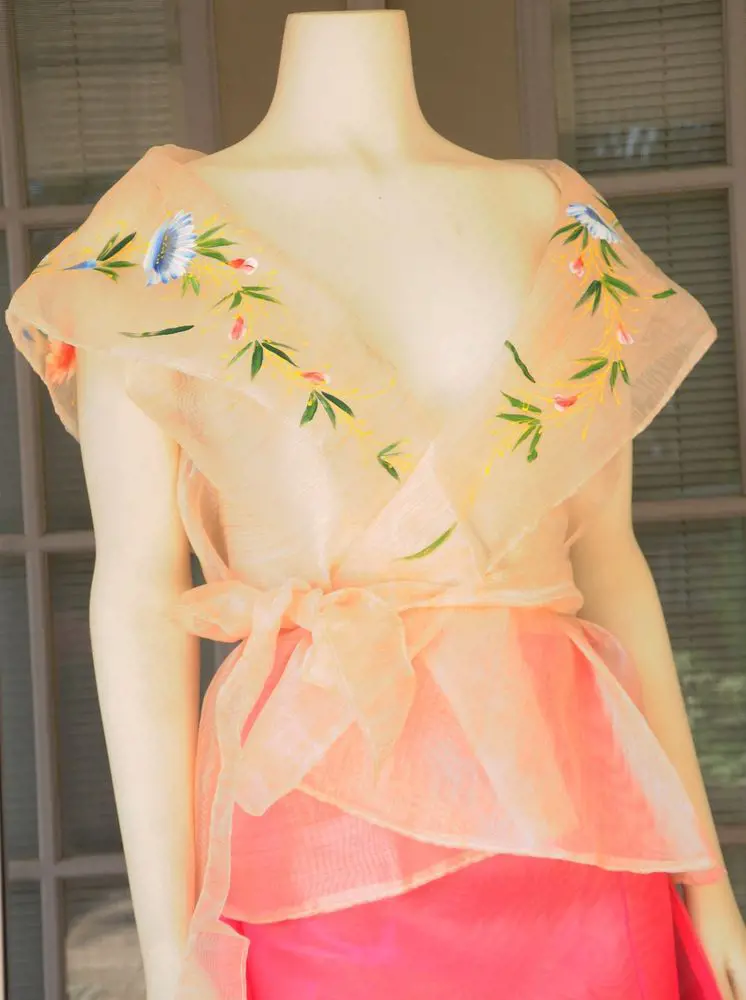
If you're planning to make a DIY Filipiniana dress, one of the most important considerations is how much fabric you will need. The amount of fabric required will depend on several factors, such as the design of the dress, your measurements, and the fabric width.
To determine the amount of fabric you need, you will first need to take accurate measurements of yourself. These measurements may include your bust, waist, hips, and length from shoulder to ankle, depending on the style of the dress you choose.
Once you have your measurements, you can start calculating the fabric requirements. However, keep in mind that it's always a good idea to buy a little extra fabric to account for mistakes or alterations.
The next factor to consider is the design of the dress. Filipiniana dresses come in various styles, including the Maria Clara, the Baro't Saya, and the Terno. Each style will have different requirements in terms of fabric length and width.
For a simple Maria Clara dress, you will generally need around 4 yards of fabric, assuming a standard width of 45 inches. If you opt for a Baro't Saya, which consists of a blouse and wrap-around skirt, you may need around 5 to 6 yards of fabric.
The Terno, which features butterfly sleeves, will typically require more fabric due to the additional volume. For a Terno dress, you may need around 7 to 8 yards of fabric, depending on your measurements and desired length.
It's important to note that these fabric estimates are based on average measurements and standard fabric widths. If you have a larger body size or prefer a longer dress length, you may need more fabric.
When shopping for fabric, make sure to check the width of the fabric you're interested in. Fabric widths can vary from around 45 to 60 inches. If you choose a wider fabric, you may need less in terms of length.
To ensure accuracy, consider creating a mock-up or muslin version of the dress using inexpensive fabric before cutting into your final fabric. This will allow you to make any necessary adjustments before committing to the final garment.
In summary, the amount of fabric you will need to make a DIY Filipiniana dress depends on factors such as your measurements, the dress style, and the fabric width. While there are general estimates for each style, it's important to take accurate measurements and consider making a mock-up to ensure a perfect fit.
Styling Tips: What to Wear Under a Short Dress
You may want to see also

Can you suggest any patterns or templates for a DIY Filipiniana dress?
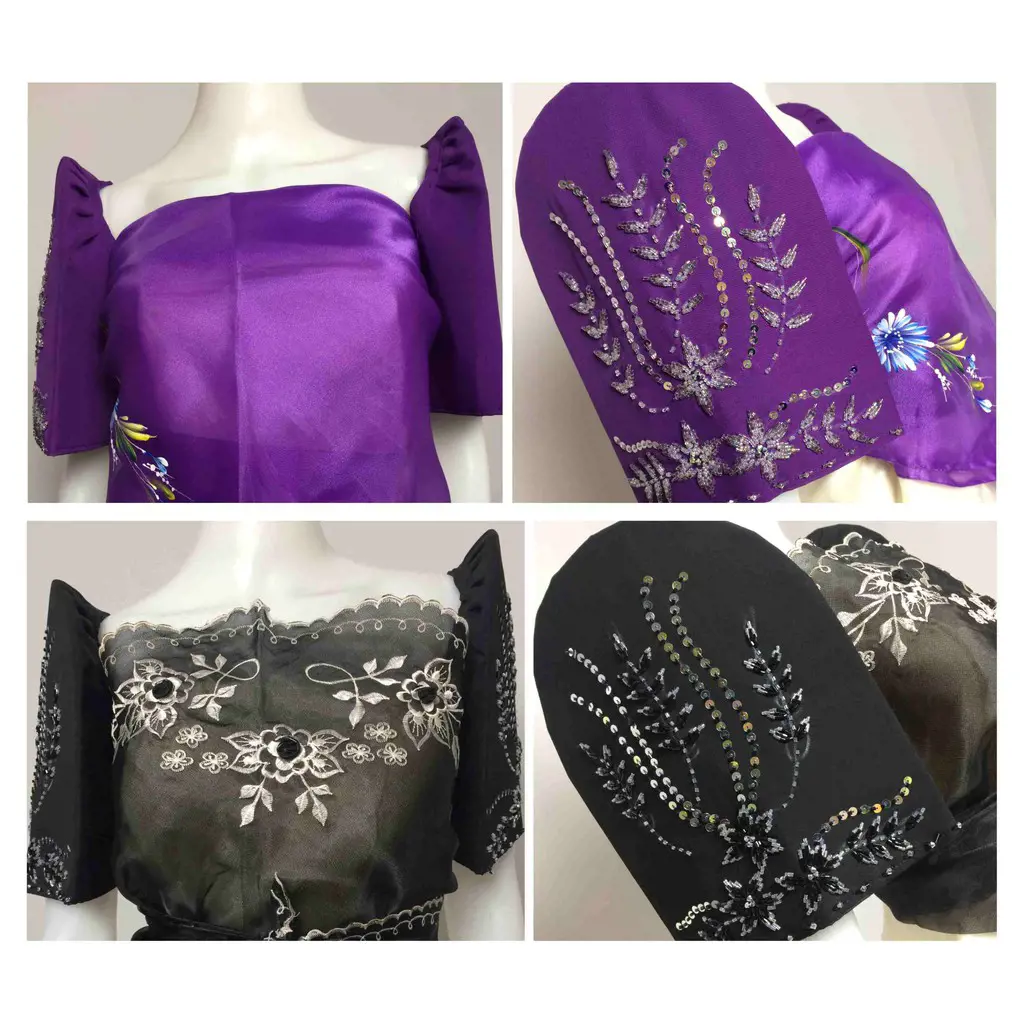
A Filipiniana dress is a traditional Filipino attire typically worn during special occasions or cultural events. It features intricate details, vibrant colors, and a flattering silhouette that highlights the curves of the body. If you're looking to make your own Filipiniana dress, there are several patterns and templates available that can guide you through the process. In this article, we will explore some of these patterns and templates and provide step-by-step instructions on how to create your very own Filipiniana dress.
Baro't Saya Pattern:
The baro't saya is one of the most iconic styles of Filipiniana dresses. It consists of a fitted bodice and a wide, floor-length skirt. To create this dress, you will need a pattern for the bodice and skirt. You can either purchase a pattern online or download a free template from a sewing website.
Start by cutting out the pieces for the bodice and skirt according to the pattern's instructions. Then, sew the bodice together, making sure to include any necessary darts or seams. Next, attach the skirt to the bodice, gathering the fabric to create a full, flowing effect. Finish off the dress by sewing a zipper or buttons along the back for closure.
Maria Clara Pattern:
The Maria Clara dress is another popular style of Filipiniana attire, characterized by its bell-shaped sleeves and high collar. To start, find a pattern for the Maria Clara dress that includes the bodice, skirt, sleeves, and collar. You can find these patterns online or in sewing books dedicated to Filipino clothing.
Once you have your pattern, cut out the pieces according to the instructions. Begin by sewing the bodice and skirt together, following any provided markings for pleats or gathers. Then, attach the sleeves to the armholes, making sure to adjust the gathers to create the desired effect. Finally, sew the collar onto the neckline, ensuring a snug fit.
Terno Pattern:
The terno is a modern take on the Filipiniana dress, known for its butterfly sleeves that extend from the shoulders to the wrists. To make a terno dress, you will need a pattern that includes the bodice, skirt, and sleeves. Look for patterns specifically designed for ternos, as they will provide the necessary measurements and instructions.
Begin by cutting out the pieces for the bodice, skirt, and sleeves. Sew the bodice together, making any necessary adjustments for a perfect fit. Then, attach the skirt to the bodice, ensuring that the gathers are evenly distributed. Finally, sew the sleeves onto the bodice, aligning them with the shoulder and wrist seams.
In conclusion, making your own Filipiniana dress can be a rewarding and creative endeavor. By using patterns and templates, you can easily create a dress that captures the beauty and elegance of traditional Filipino attire. Whether you choose the baro't saya, Maria Clara, or terno style, following the step-by-step instructions will ensure a successful and stunning final product. Remember to have fun with the process and don't be afraid to add your own personal touches to make the dress uniquely yours.
The Perfect Dress Color to Compliment Your Pink Lipstick
You may want to see also

Are there any tips or tricks for getting the traditional Filipiniana dress silhouette right?
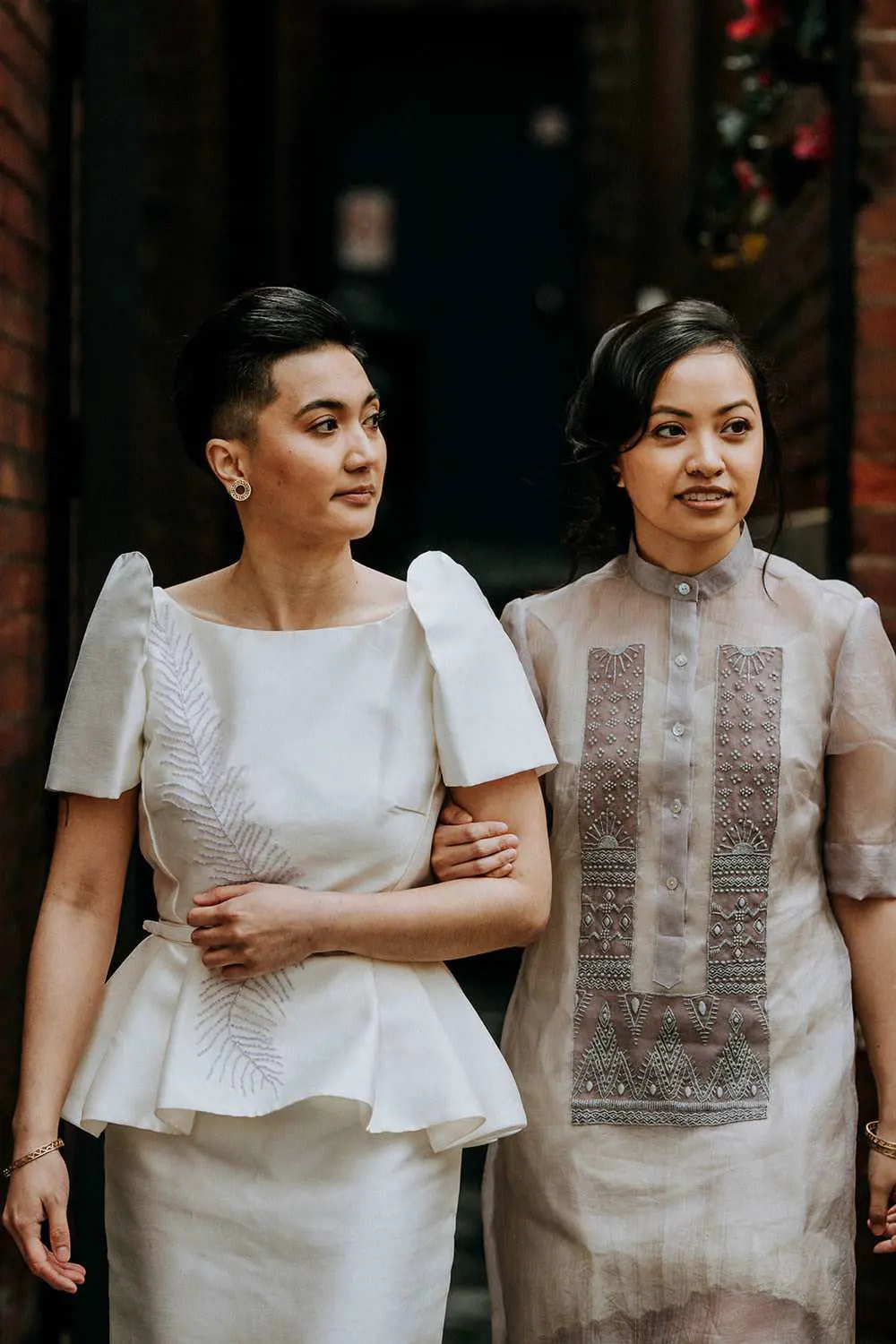
The traditional Filipiniana dress, also known as the Filipiniana gown or terno, is a symbol of Filipiniana pride and beauty. This elegant dress is characterized by its butterfly sleeves and fitted bodice, and it is commonly worn on special occasions and formal events in the Philippines. However, achieving the perfect traditional Filipiniana dress silhouette can be challenging. Here are a few tips and tricks to help you get it right:
- Understand the Silhouette: The traditional Filipiniana dress silhouette is known for its hourglass shape. It emphasizes the natural curves of the body, particularly the waist and hips. The bodice should be fitted, and the skirt should have a slight flare, creating a balanced and feminine silhouette.
- Choose the Right Fabric: The fabric you choose plays a crucial role in achieving the desired silhouette. For a traditional Filipiniana dress, opt for lightweight and flowy fabrics such as piña, jusi, or organza. These fabrics drape beautifully and allow for movement, enhancing the overall look of the dress.
- Consider the Length: The length of the Filipiniana dress can vary depending on personal preference and the occasion. For a more formal event, a floor-length dress is ideal. If you're attending a semi-formal event, a knee-length or tea-length dress can also work well. Make sure to choose a length that flatters your height and body proportions.
- Focus on the Sleeves: The butterfly sleeves are a signature feature of the traditional Filipiniana dress. To achieve the right sleeve shape, start by cutting the fabric in a rectangular shape. Then, fold it in half and sew a straight line along the shorter side, leaving a small opening near the fold. This opening will serve as the armhole. Next, gather the fabric near the opening and sew it together, creating the distinctive butterfly shape. Finally, attach the sleeves to the bodice of the dress.
- Proper Bodice Fitting: The bodice of the traditional Filipiniana dress should fit snugly but comfortably around the bust and waist. To ensure a proper fit, take accurate body measurements and adjust the pattern accordingly. This will prevent any gaps or bulges in the bodice, giving you a clean and polished look.
- Accessorize with a Belt: To emphasize the hourglass shape of the traditional Filipiniana dress, consider adding a belt to cinch in the waist. A belt can provide structure and definition, giving the dress a more tailored appearance. Choose a belt that complements the fabric and color of your dress for a coordinated look.
- Pay Attention to Details: The minor details can make a significant difference in achieving the perfect traditional Filipiniana dress silhouette. Take the time to carefully sew the seams, finish the edges, and add any additional embellishments such as lace, embroidery, or beadwork. These touches can elevate the overall look and create a garment that stands out.
In conclusion, getting the traditional Filipiniana dress silhouette right requires attention to detail, knowledge of the silhouette, proper fitting, and choice of fabric. By following these tips and tricks, you can create a stunning traditional Filipiniana dress that showcases the beauty and elegance of this iconic Filipino attire.
Unlocking Versatility: Stylish Ways to Dress up Black Dungarees
You may want to see also
Frequently asked questions
Making a DIY Filipiniana dress can be a fun and rewarding project. To begin, you will need to gather the necessary materials such as fabric, thread, and a sewing machine or needle and thread. Next, you will need to find a pattern or create your own based on your desired design. Once you have your pattern, you can cut out the fabric and begin sewing the dress together. It is important to follow the instructions carefully and take your time to ensure a professional-looking finished product. You may also consider adding embellishments such as lace or embroidery to enhance the dress.
There are several places where you can find patterns for a DIY Filipiniana dress. One option is to search online for free or paid sewing patterns specifically designed for Filipiniana dresses. Websites and online marketplaces dedicated to sewing and crafts often have a wide selection of patterns available for purchase or download. Another option is to visit your local fabric store or craft store. These stores usually have sewing pattern catalogs or books that you can browse through to find a pattern that suits your style and skill level. Alternatively, you can also try reaching out to local sewing or cultural organizations that may have resources or recommendations for Filipiniana dress patterns.
Making a DIY Filipiniana dress can be a challenging project, but with some tips and tricks, you can create a beautiful dress. Firstly, measure your body accurately and choose the appropriate size pattern to ensure the dress fits well. Take note of any adjustments you may need to make to the pattern to accommodate your body shape. Secondly, choose a fabric that is appropriate for the style of dress you want to create. Traditional Filipiniana dresses are often made from fabrics such as jusi, piña, or organza, but you can also use other fabrics if desired. Lastly, pay attention to the details such as seam finishes, hemming, and embellishments. These small details can greatly elevate the overall look of the dress and give it a more professional finish.







